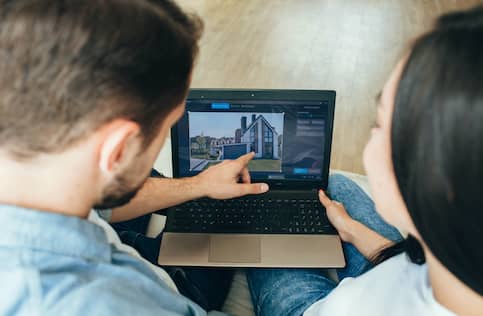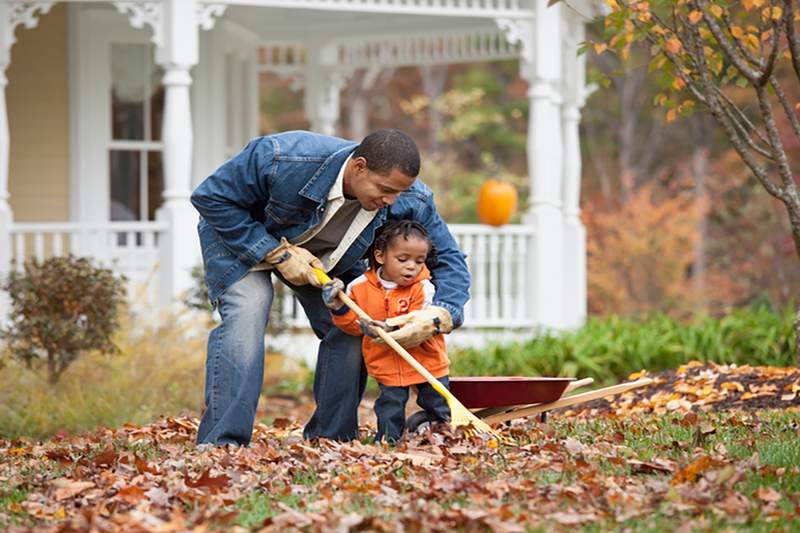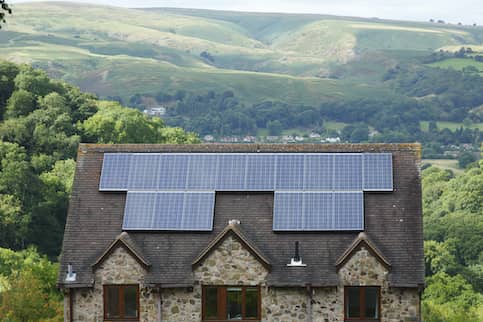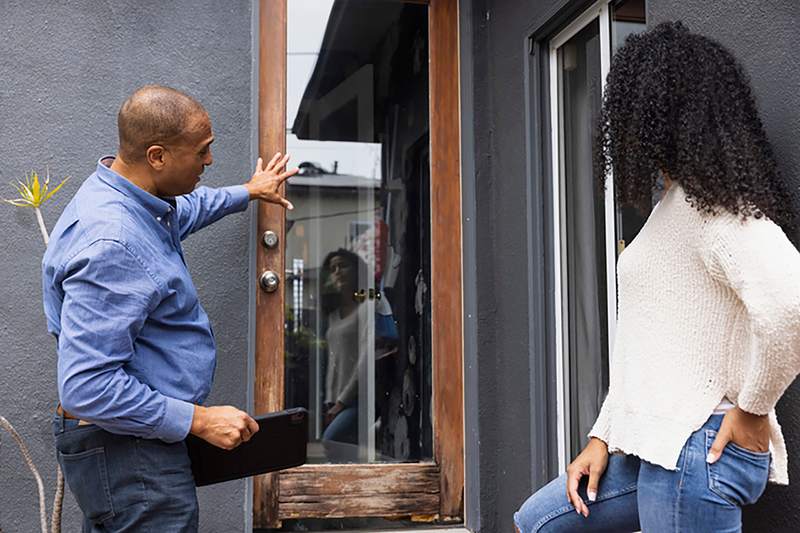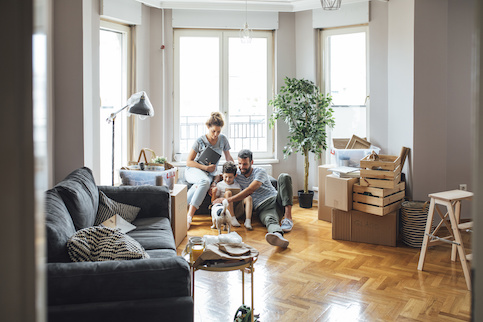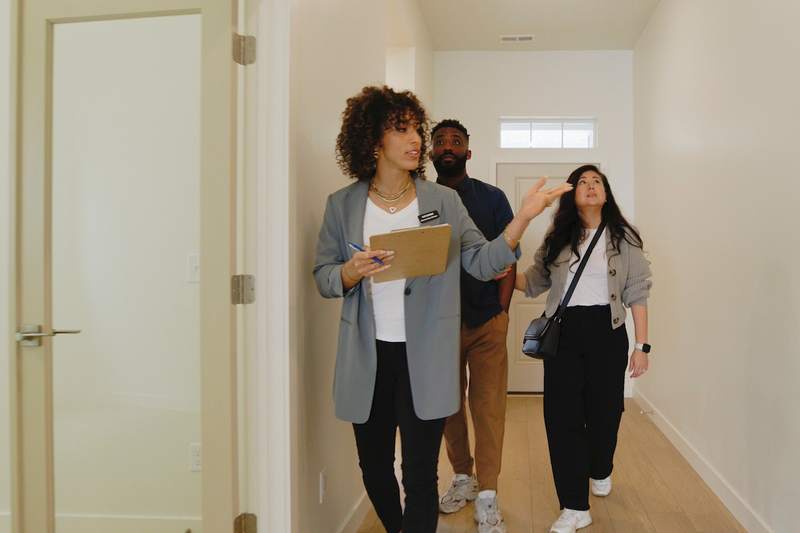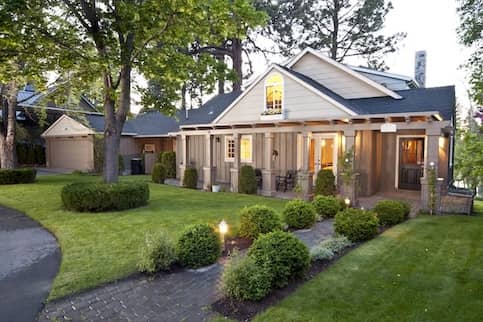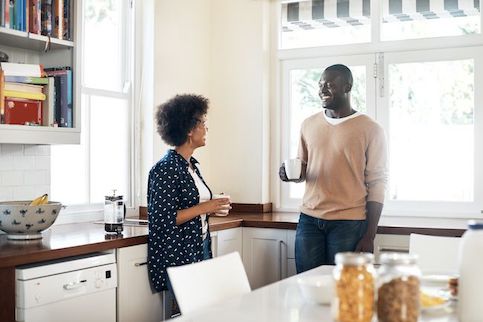Shopping for a new home can be overwhelming. A home is a major investment and a long-term commitment, so you want to be satisfied with your purchase. Let’s review what to look for in a house so you’re well prepared. Understanding the key features to consider when evaluating potential properties can help simplify the process of finding your ideal home.
Key Takeaways:
- Knowing which features you value most is essential as a home buyer.
- Home size and layout, property amenities, number of bedrooms and bathrooms, and exterior condition are key elements to consider as you begin touring potential houses.
- Understanding what to look for in a house can help you choose a property that meets your needs and is in good condition so that you can begin your homeownership journey on a positive note.
Understanding The Things To Look For While Buying A House
Choosing a home is a highly personal decision. It’s important that you determine which home features you value most, rank their level of importance to your needs, and decide which elements are negotiable and which are deal-breakers before buying a house.
Here are the top things to consider as you view homes:
1. House Size
Before you start your home search, you should do the following:
- Determine your ideal home size, including minimum and maximum square footage.
- Figure out your preferred number of bedrooms and bathrooms.
When making these decisions, consider your lifestyle and personal preferences.
If you’re planning to start a family soon or have a growing family, you may prefer a home with more square footage or additional bedrooms and bathrooms. Meanwhile, if you’re a couple or plan to buy a starter home, a house with a smaller footprint may be a better fit for your needs.
What’s Your Goal?
Buy A Home
Discover mortgage options that fit your unique financial needs.

Refinance
Refinance your mortgage to have more money for what matters.
Tap Into Equity
Use your home’s equity and unlock cash to achieve your goals.
2. Yard
Yard type is another factor to consider. You should determine whether you’d prefer a small, low-maintenance lawn or a property with more acreage. Don’t forget about the time and cost required to maintain your yard. You should also consider what backyard features you value.
Some buyers prioritize lakefront properties, while others want a home with a pool or hot tub. Some buyers value outdoor living spaces, such as porches or decks. Determine which yard elements are most appealing to you, and then decide if they’re worth the maintenance and cost.
3. The Home’s Exterior
The state of the exterior condition is another key feature to explore. Paying for a home inspection can help you avoid purchasing a house that’s in rough shape. However, it’s a good idea to keep an eye out for potential red flags before getting further into the buying process.
As you tour potential homes, review the condition of the following exterior components:
- Roof: A new roof can easily cost $5,000 to $13,000 or more. Roof size, materials, roof slope and labor costs can impact the price you pay. As a new buyer, you don’t want to be stuck with the expense of a new roof. Inspect the roof for damage, and ask the current owner about the roof’s age and what maintenance work they’ve performed.
- Foundation: Issues with a home’s foundation can result in several thousand dollars in repair costs. Be alert to the warning signs of foundation problems, such as cracks in the walls (particularly around doorways or windows) and doors and windows that stick. You should have a professional verify the condition of a home’s foundation.
- Siding: Look out for any apparent signs of damage or disrepair, like peeling paint, rotting wood and cracks.
4. Number Of Bedrooms
Another home feature that should be on your list of things to look for while buying a house is bedrooms. It’s wise to consider the number of bedrooms. But that’s not all.
Here are some other factors to think about:
- Room location within the home
- The size and layout of each room
- Natural lighting vs. artificial lights
- The quality of window views
- The level of privacy each room offers
5. Bathrooms
Bathrooms are another key element of a home. As you tour potential properties, you want to verify that everything is in working order.
Consider taking these steps:
- Test toilets, faucets and showers.
- Make sure fans work.
- Check under the sink and around the toilet for leaks or signs of water damage.
- Keep an eye out for signs of mold.
Taking these steps for the homes that you’re seriously considering can help you avoid bathroom-related surprises, such as plumbing problems or low water pressure, after moving in.
Consider the type of shower or tub each bathroom has and whether they meet your preferences. Bathroom renovations can be expensive, so you’ll want to choose a home with bathrooms that meet your needs or be prepared to pay for home improvements later.
6. Living Room
As you draft your list of things to look for while buying a house, don’t forget the living room. Think about what kind of living room would make you happiest. Do you prefer a living room that is chic and modern, or do you want your living space to feel cozy and warm? Stylistic changes are usually easy to make.
Your primary focus should be on the room’s square footage and floor plan. You should also consider whether you can visualize spending time in the space with your friends and family. Consider whether the furniture you already own complements the room’s layout. Are there any limitations that impact how you can use the space? Is the room large enough for how you want to use the space?
Finally, flooring is another home feature to consider. Carpeting can provide comfort, but it can be more challenging to clean if you have pets or young children at home. If you’re unhappy with the flooring, consider whether you have the budget to make renovations.
7. Heating, Ventilation And Air Conditioning (HVAC) Systems
Don’t overlook heating and cooling.
Here are some questions to ask to help evaluate the condition of a home’s HVAC systems:
- What kind of heating does the home have?
- Is it a forced-air system powered by a furnace?
- Does the furnace use electricity, gas or an alternative energy source?
- Is it an older house that uses a boiler and radiator system?
- Does the home have baseboard heaters that use electricity?
- Does the home have central air, or do the current owners use window units?
- When were the heating and cooling systems installed?
- When were the heating and cooling systems last serviced?
8. Basement
When inspecting the basement, note whether it’s finished or remodeled. You’ll need to decide if you prefer a finished basement for added living space. If the basement is unfinished, a remodel can be expensive.
Look for signs of water damage, such as musty odors, water stains and mold growth. Consider having a radon test done during the home inspection process, as basements in some areas may exceed the maximum radon levels outlined by the Environmental Protection Agency (EPA).
If the basement is finished, consider the amount of lighting the space has. The basement should also have at least one accessible door or window for a quick exit in case of an emergency.
9. Attic
Inspect the attic for signs of leaks and damage to the roof’s structure. You should also be alert to animal droppings, as this may indicate signs of infestation or property damage.
Another thing to take note of is the attic’s ventilation and insulation. What kind of insulation is it? Does it appear wet or water stained? If you suspect water damage or a damaged roof, discuss your concerns with your real estate agent.
10. Garage
If you have multiple cars or plan to use the garage for parking and storage, you may want a home with a multicar garage. Note the total number of available parking spaces, as well as the length and width of the driveway. You should also verify that the garage door operates smoothly and is in good condition.
Consider the following:
- Is the garage attached or separate from the house?
- Do you need additional space to store and organize your belongings or a dedicated area for a workbench?
- How much garage space do you need?
11. Power Outlets
Finally, don’t overlook power outlets. Many buyers neglect to consider the number and location of electrical outlets when touring older homes. Even in new homes, poorly placed outlets can limit layout options and make small spaces more challenging to work with.
Ready To Become A Homeowner?
Get matched with a lender that can help you find the right mortgage.
Other Things To Look For While Buying A House
Here are some other things to keep in mind as you consider homes to buy:
Budget
Knowing how much house you can afford before you start looking is essential. Don’t ignore your budget. Ensure the home you want to buy falls within the price range your mortgage lender has approved you for and that you can comfortably afford the monthly payments.
Some lenders may be able to increase your loan amount, depending on your credit score and down payment, but be careful not to overbuy.
Neighborhood
As you begin to narrow down your options, make sure you consider the neighborhood. You want to choose a welcoming and safe area to live. You can ask locals questions and learn more about the area in community social media groups. It’s also a good idea to visit the neighborhood during the day and at night to get a sense of what living there is like.
Public Schools
It can also be helpful to learn more about the local school district and nearby schools. Regardless of whether you have school-aged children, local statistics from public schools can help you make a more informed buying decision. If you plan to eventually sell your home, living near a great school district can add value to your property.
Take The First Step To Buying A Home
Find a lender that will work with your unique financial situation.
Final Thoughts: Know What To Look For In A House
Every home has pros and cons. It’s up to you to decide which home features you value most and can’t live without and which ones you’re willing to compromise on. Remember that no home is without flaws. The home you buy is unlikely to check every box on your list. Your primary goal should be to find a house that meets many of your wants and needs.
The home-buying process can feel overwhelming, but it’s more manageable if you know what to look for in a house and what questions to ask as you tour potential properties.

Natasha Etzel
Natasha Etzel is a financial writer with over a decade of experience. She has covered various financial topics, including mortgages, personal loans, home equity loans, debt consolidation, and refinancing. She writes for financial companies, including mortgage lenders, and various publications, including NerdWallet, Newsweek, The Motley Fool, and more.
